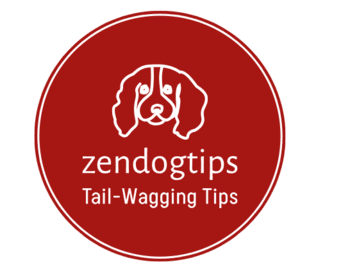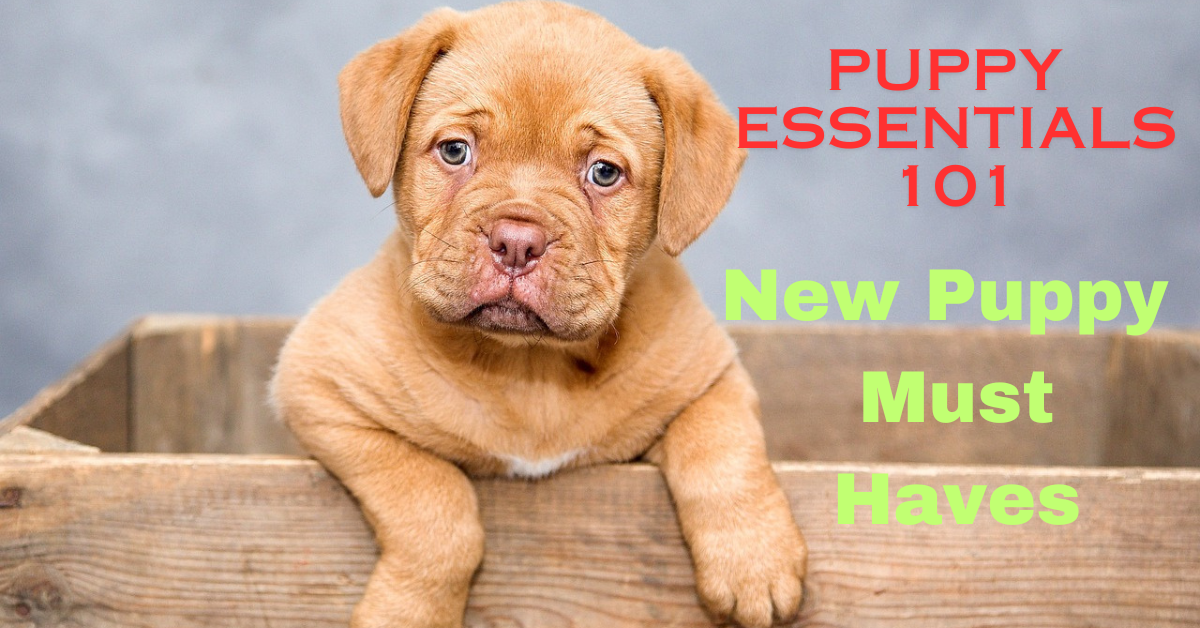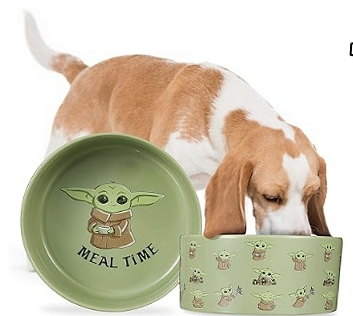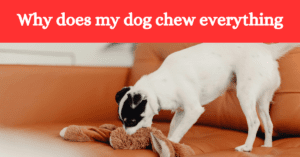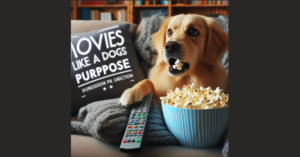Introduction:
Welcoming a new puppy into your home is an exhilarating experience filled with boundless joy and wagging tails. As you prepare to embark on this delightful journey of companionship and unconditional love, it’s essential to ensure that you have all the necessary items to set your furry friend up for success. From cozy beds to interactive toys, there are 15 new puppy must haves essentials that every new puppy parent should consider adding to their shopping list. Imagine the excitement in those adorable puppy eyes as they discover a world of endless possibilities with these carefully curated items designed to make their transition smooth and comfortable.
Food and Water Bowls:
Stainless steel or ceramic bowls are favored for their durability and ease of cleaning. Stainless steel bowls are resistant to rust and corrosion, making them a long-lasting option for your puppy’s feeding needs. Their smooth surface also prevents bacteria buildup, ensuring your puppy’s meals remain hygienic. Ceramic bowls offer similar benefits with the added advantage of being aesthetically pleasing. Their weight helps prevent tipping and spilling, keeping your puppy’s eating area tidy. Whichever material you choose, prioritize bowls that are of an appropriate size for your puppy’s breed and age, promoting comfortable access to food and water. Regular cleaning of these bowls with hot, soapy water is crucial for maintaining hygiene. And preventing contamination, safeguarding your puppy’s health.
High-Quality Puppy Food:
Selecting the right puppy food is paramount for your puppy’s growth and well-being. High-quality puppy food should provide a balanced combination of essential nutrients tailored to your puppy’s specific breed and size. Look for options that feature real meat as the primary ingredient, ensuring your puppy receives adequate protein for healthy muscle development. Avoid foods containing fillers, artificial additives, or by-products. These may not meet your puppy’s nutritional requirements and could potentially cause digestive issues. Consult with your veterinarian to determine the most suitable food for your puppy’s individual needs, taking into account factors such as age, activity level, and any dietary sensitivities or allergies. By prioritizing high-quality nutrition, you lay a strong foundation for your puppy’s lifelong health and vitality.
Collar and Leash:
A collar and leash are indispensable tools for outings and training sessions with your puppy. When selecting a collar, opt for one that is adjustable to ensure a proper fit without being too tight or restrictive. This ensures your puppy’s comfort and safety during walks and other activities. Similarly, choose a leash that is durable and comfortable to hold, providing you with sufficient control without causing discomfort to your puppy. Proper leash training is essential for teaching your puppy to walk politely on a leash and respond to your commands effectively. Start with short, positive training sessions and use treats and praise to reinforce desired behaviors. By equipping yourself with a well-fitted collar and leash and investing time in training. You set the stage for enjoyable and rewarding experiences with your puppy outdoors.
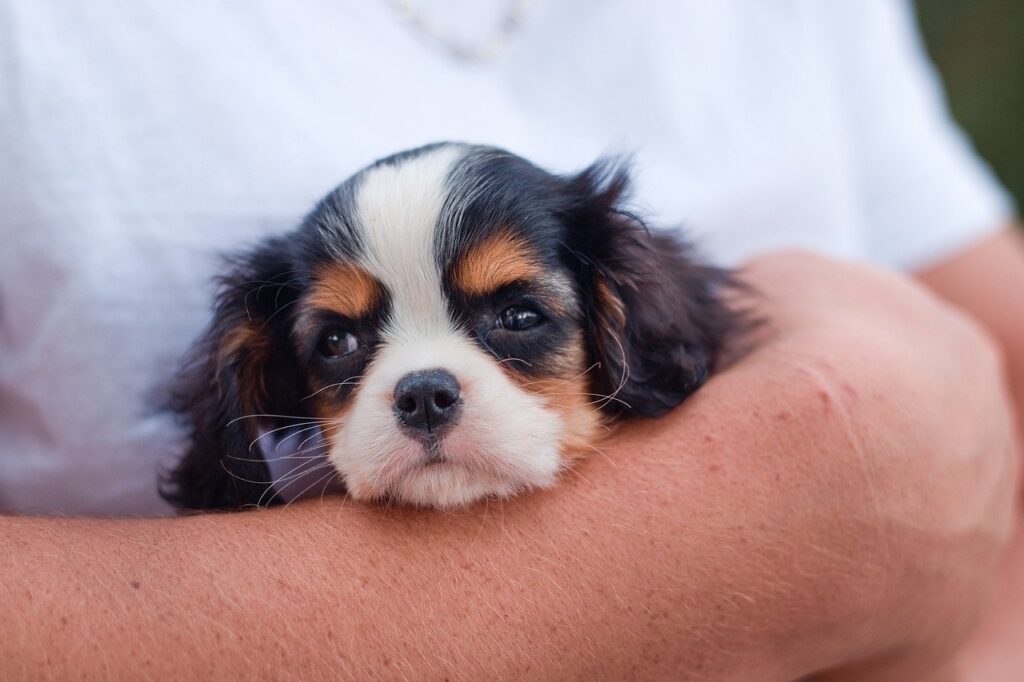
ID Tag:
An ID tag is a small yet vital accessory that could make all the difference in reuniting you with your puppy in the event they become lost. Include essential information on the tag, such as your puppy’s name and your current contact details, including your phone number and address. This ensures that anyone who finds your puppy can easily reach out to you. This facilitates a swift and safe return home. Choose a durable ID tag that can withstand wear and tear, as your puppy will likely wear it every day. Regularly check the tag for readability and ensure that the information remains accurate and up to date. By taking this simple precaution, you provide added protection for your puppy and invaluable peace of mind for yourself.
Crate or Dog Bed:
Creating a cozy and secure sleeping space for your puppy is essential for their physical and emotional well-being. A crate or dog bed serves as a designated area where your puppy can retreat for rest and relaxation. It offers them a sense of security and comfort. When choosing a crate or bed, consider your puppy’s size and breed to ensure a proper fit and adequate space for movement. Line the crate or bed with soft bedding, such as blankets or towels, to provide cushioning and warmth. Introduce your puppy to their sleeping area gradually, using positive reinforcement to associate it with pleasant experiences. Avoid using the crate as a form of punishment, as it should be a safe and inviting space for your puppy to enjoy. With the right crate or bed, you provide your puppy with a sanctuary where they can recharge and thrive.
Toys:
Toys play a crucial role in keeping your puppy engaged, entertained, and mentally stimulated. Chew toys help satisfy your puppy’s natural urge to gnaw and teethe. While squeaky toys provide auditory stimulation and puzzle toys offer mental challenges. Rotate your puppy’s toys regularly to maintain their interest and prevent boredom. Be mindful of your puppy’s chewing habits and select toys that are durable and safe for them to chew on. Avoid toys with small parts or components that could pose a choking hazard. Supervise your puppy during playtime to ensure their safety and intervene if necessary. Interactive toys, such as treat-dispensing puzzles, provide mental stimulation and encourage problem-solving skills. By offering a variety of toys, you enrich your puppy’s environment and strengthen the bond between you through shared play and enjoyment.
Puppy Training Pads:
Puppy training pads are invaluable tools for housebreaking your puppy and managing accidents indoors. Place the pads in designated areas of your home where you want your puppy to eliminate, such as near the door or in a specific room. Use positive reinforcement, such as treats and praise, to encourage your puppy to use the pads consistently. Gradually transition your puppy from using training pads indoors to going potty outside as they become more accustomed to the routine and develop better bladder control. Replace the pads regularly and clean up any accidents promptly to maintain cleanliness and hygiene in your home. Consistency, patience, and positive reinforcement are key to successful house training and establishing good potty habits in your puppy.
Grooming Supplies:
Regular grooming is essential for maintaining your puppy’s health, hygiene, and appearance. Invest in quality grooming supplies, including a brush or comb suitable for your puppy’s coat type. Use puppy shampoo formulated for their sensitive skin, nail clippers, and ear cleaner. Establish a grooming routine early in your puppy’s life to get them accustomed to being handled and groomed regularly. Brush your puppy’s coat daily to remove loose hair, dirt, and tangles. Also bathe them as needed to keep their skin and coat clean and healthy. Trim your puppy’s nails regularly to prevent them from becoming overgrown and causing discomfort or difficulty walking. Check your puppy’s ears weekly for signs of infection or irritation and clean them gently with a damp cloth or ear cleaner as recommended by your veterinarian.
Poop Bags:
Poop bags are essential for responsible pet ownership and maintaining cleanliness during walks and outings with your puppy. Always carry a supply of poop bags with you whenever you take your puppy outside to ensure you can promptly clean up after them. Choose biodegradable poop bags that are environmentally friendly and safe for disposal in regular trash bins. When picking up your puppy’s waste, be sure to double-bag it for extra security and odor control. Proper waste disposal not only helps keep public spaces clean and hygienic but also demonstrates responsible pet ownership and consideration for the environment. Remember to always clean up after your puppy and dispose of their waste properly to be a courteous and conscientious member of your community.
Puppy Gate:
A puppy gate provides a versatile solution for managing your puppy’s access to different areas of your home and ensuring their safety. Choose a sturdy, adjustable gate that securely blocks doorways, staircases, or other openings where you want to restrict your puppy’s access. Install the gate properly according to the manufacturer’s instructions to ensure it remains stable and secure. Especially if your puppy is prone to jumping or pushing against it. Use the gate to create safe boundaries within your home and prevent your puppy from accessing potentially hazardous areas or items when you are unable to supervise them closely.
Puppy-Appropriate Treats:
Puppy-appropriate treats serve as valuable incentives during training sessions. Reinforcing positive behaviors and strengthening the bond between you and your puppy. Choose treats that are small, soft, and easily digestible, ensuring they’re suitable for your puppy’s developing teeth and sensitive stomach. Opt for varieties made with high-quality ingredients and avoid those with artificial additives or fillers. By using treats strategically, you can motivate your puppy to learn new commands and behaviors while making training sessions enjoyable and effective.
Pet First Aid Kit:
A pet first aid kit is an essential resource for addressing minor injuries and emergencies that may arise with your puppy. Stocked with items such as bandages, antiseptic solution, tweezers, and gauze pads. It equips you to provide immediate care and comfort to your furry friend in times of need. Regularly check and replenish the contents of your first aid kit to ensure it remains fully stocked and ready for use. Having a well-prepared first aid kit on hand can offer peace of mind and expedite response in critical situations, safeguarding your puppy’s health and well-being.
Pet Insurance:
While optional, pet insurance offers valuable financial protection against unexpected medical expenses for your puppy. Coverage typically includes veterinary care, medications, surgeries, and diagnostic tests. This provides reassurance that you can affordably manage your puppy’s healthcare needs. Before selecting a policy, carefully review the coverage options, deductibles, and exclusions to ensure they align with your preferences and budget. By investing in pet insurance, you gain the peace of mind that comes from knowing you can provide your puppy with the necessary medical care without financial strain, allowing you to focus on their health and happiness.
Puppy Training Books or Guides:
Puppy training books or guides serve as invaluable resources for understanding your puppy’s needs, behavior, and development stages. Whether you’re a first-time puppy owner or seeking to refine your training techniques. These educational materials offer expert insights, practical tips, and step-by-step instructions for nurturing a well-behaved and well-adjusted puppy. From house training and obedience commands to socialization and behavior modification, there’s a wealth of information available to support you in raising a happy and confident canine companion. By immersing yourself in puppy training literature, you empower yourself to meet your puppy’s needs and build a strong foundation for a lifelong bond based on trust and mutual understanding.
Veterinary Care:
Veterinary care is essential for maintaining your puppy’s health, wellness, and longevity. Schedule regular visits to the vet for vaccinations, deworming, and comprehensive health check-ups, starting from the earliest stages of your puppy’s life. These preventative measures not only protect your puppy from infectious diseases and parasites but also allow your vet to monitor their growth and development. And detect any underlying health issues, and provide timely interventions as needed. Establishing a relationship with a trusted veterinarian ensures access to expert guidance, personalized care, and ongoing support throughout your puppy’s journey to adulthood, promoting their overall well-being and quality of life.
Final Thoughts:
Preparing for a new puppy involves ensuring you have the essential must-haves to make their transition smooth and comfortable. Items like a cozy bed, nutritious food, toys for mental stimulation, grooming tools, and safety gear are all important for a happy and healthy pup. By investing in these necessities, you are not only setting your new furry friend up for success but also fostering a strong bond with them from the start. Remember that each puppy is unique, so it’s essential to tailor their supplies to their individual needs and preferences. Start creating a welcoming environment for your new pup today by gathering these must-have items!
